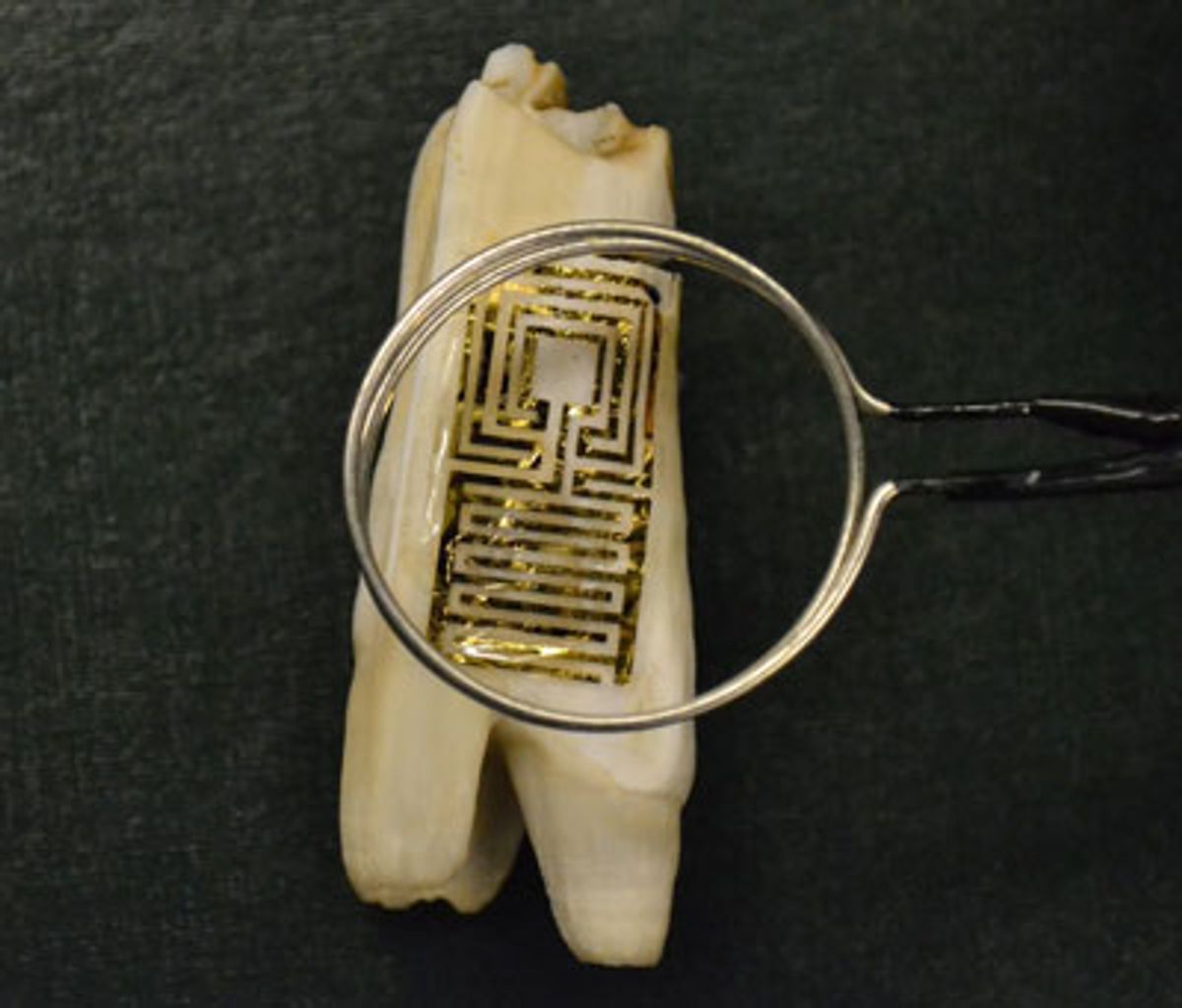A couple of years ago I covered research into developing a nanomaterial that could end the need for root canals. I took some criticism at the time for suggesting in that blog that root canals were unpleasant. So, despite some reluctance on my part to cover dental-related nanotechnologies, let's look once again at the latest nanotechnology being used with teeth.
While the research, which was initially published in the journal Nature Communications, may not combat tooth decay, it holds some promise as method for on-body health monitoring. The researchers from Tufts University and Princeton University have developed a method for placing wireless graphene nanosensors onto biomaterials via silk absorption.
“In our paper, we demonstrate that graphene can be printed onto water-soluble silk, says Manu S Mannoor, a graduate student at Princeton University and the paper’s first author. “This in turn permits intimate biotransfer and direct interfacing of graphene nanosensors with a variety of substrates including biological tissues and hospital IV bags to provide in situ monitoring and detection of bacterial contamination and infection."
The key to the technology seems to be the use of silk thin films. "First, we printed graphene nanosensors onto water-soluble silk thin-film substrates,” explains Mannoor in the Nanowerk piece. “The graphene is then contacted by interdigitated electrodes, which are simultaneously patterned with an inductive coil antenna. Finally, the graphene/electrode/silk hybrid structure is transferred to biomaterials such as tooth enamel or tissue, followed by functionalization with bifunctional graphene–AMP biorecognition moeities."
The researchers expect that this technology could serve as a first-generation platform of in situ monitoring for bacterial contamination in environments ranging from hospital sanitation to food safety analysis.
This new nanosensor may not alert you to the buildup of bacteria that would cause tooth decay, but it might be of interest those who like to decorate their teeth and be alerted to other types of bacteria.
Image: McAlpine Group, Princeton University
Dexter Johnson is a contributing editor at IEEE Spectrum, with a focus on nanotechnology.




